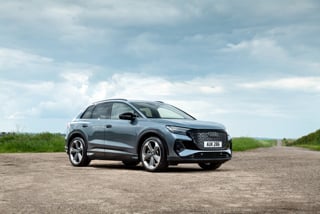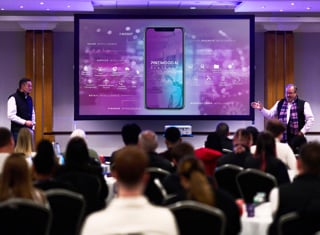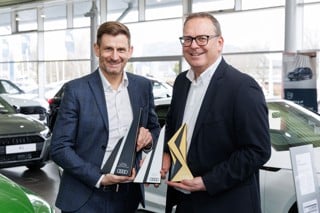Franchised dealerships are set to be centres for building brand awareness only, centred around digital displays and car configurators driven by consumer demand and expectations.
Even finance will be dealt with online, according to a business consultancy Frost & Sullivan analyst speaking at a London conference.
Julia Saini told delegates at the Frost & Sullivan event on urban mobility that online retail is growing rapidly and that automotive OEMs will experiment with new business strategies integrating in-store, online and mobile technology to provide an 'omni channel’ shopping experience for new car buyers.
“Finance will also be taken care of online,” Saini said.
“We still need a dealer, but the dealership will increasingly be about brand experience. And the urban digital dealership of the future will be in the heart of the mega-city.”
Saini described future flagship stores in big cities that would offer a brand experience that would include unlimited car configurations using digital displays and screens.
“Personalisation will be strong and physical space will not matter any more, meaning smaller space is required.
"There will be a customer relationship manager, rather than a salesman, who will talk you through the brand experience – and they will already know your preferences, where you come from, because you will have browsed online before the visit and left information, which is all digitally connected to the brand stores.
"This will be socially connected also if I create the car of my dreams, I may want to share that with my friends and family, resulting in further interactions and refinements to my preferred car configuration.”
Saini also described the experience of the Audi City dealership in London as a pioneer of these trends.
“It is the smallest Audi dealership in the UK and displays just three-to-four cars. But it has the highest footfall of any Audi UK dealership and it sells its cars with a 20% mark-up.
"It is a digital store, provides a brand experience and you have an unlimited way of configuring your car, so as you click, it is live in front of you and it is very easy to go 'over budget' and very different from going through a brochure and looking at physical cars.”
Saini also pointed out that the digital experience alone appears to be enough for many of Audi City's customers.
“Some 70% purchased without a test-drive,” she said.
She also maintains that the average time spent by customers at the Audi City store is much higher than conventional dealership with better quality leads and easier follow ups possible through integrated social media strategy strategies.
“And not only does the higher footfall lead to more sales, but there is also a halo effect for dealerships around it as the customer who perhaps went to the store on a lunchbreak, visits another dealership later.”
“It is possible to drop dealers and reduce the overall size of dealerships by about 20% by adopting this integrated digital approach into the sales process instead of physically showing cars in the conventional way,” Saini said.
“About 100 flagship stores will be opened by OEMs globally by 2015/16,” she maintains, with dealership space generally increasingly taken up with digital technology like gamification, augmented reality and 3D technology.
Saini also said that OEMs are now starting to move more seriously into online retailing and forecast that around 4m new cars globally will be sold online by 2020.





















Guy Ainsley - 26/06/2013 16:17
The claims made about the future of car retailing by Frost and Sullivan rapidly drift away from not only the reality today but what operators and OEMs expect tomorrow which is a continuation of the traditional full service dealership format and business model. In some markets, there is a need, currently not fully developed by OEMs, for a more flexible way to service urban markets. It’s good that OEMs experiment with new ideas such as Audi City but is nothing more than that – an experiment. It showcases options for new display technologies but it is a long way from being a viable way of fully representing the Audi brand and even further from being a sustainable business model. I had looked forward to visiting Audi City only to be told that “the tech was down” meaning it was nothing more than an expensive room with a few cars in it. Stating, for example, that people will buy finance online was old news ten years ago and doesn’t really take the debate forward nor does doubtful claims of 20% margins. A lot more work needs doing on this subject.